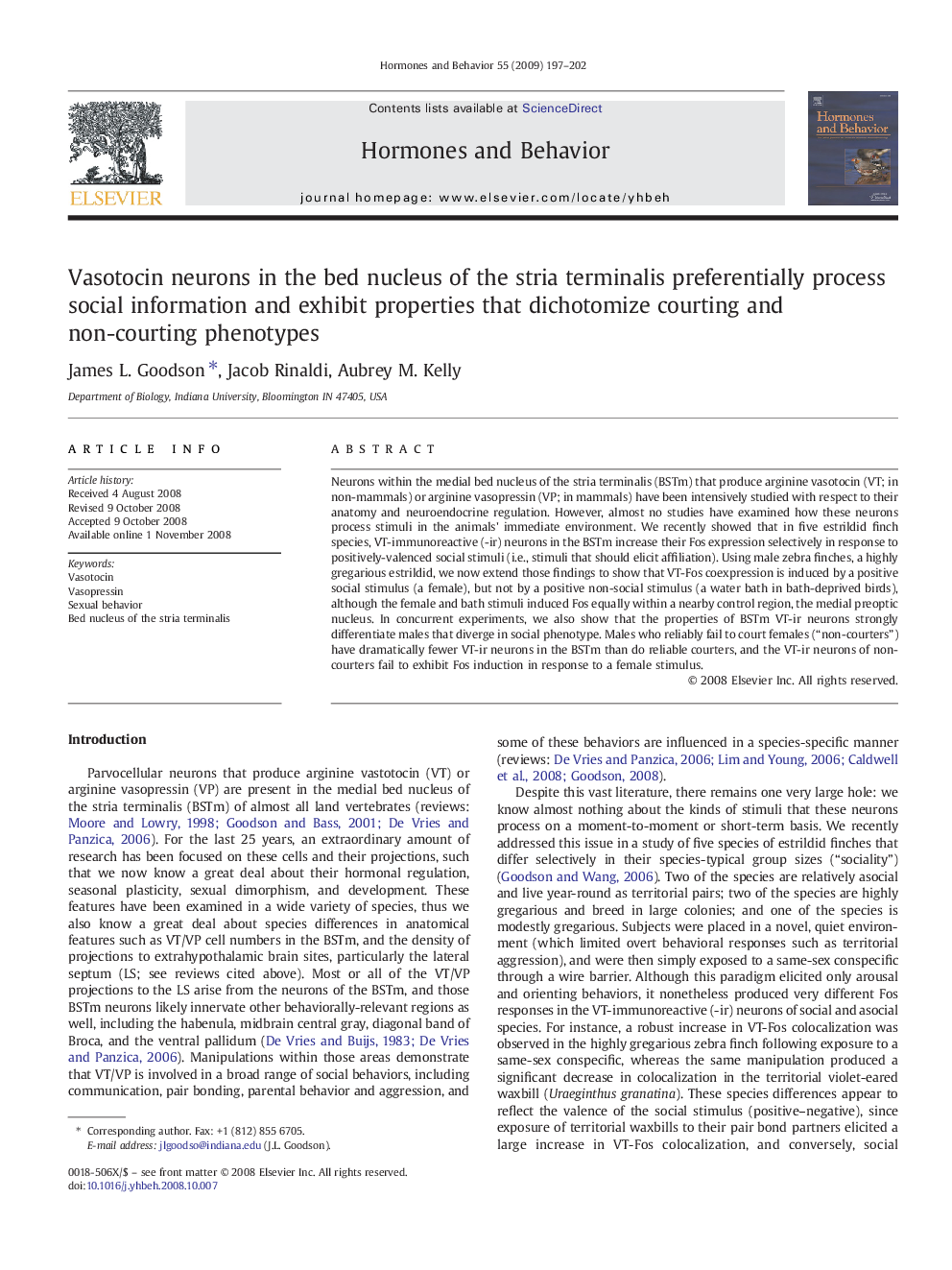| Article ID | Journal | Published Year | Pages | File Type |
|---|---|---|---|---|
| 323257 | Hormones and Behavior | 2009 | 6 Pages |
Neurons within the medial bed nucleus of the stria terminalis (BSTm) that produce arginine vasotocin (VT; in non-mammals) or arginine vasopressin (VP; in mammals) have been intensively studied with respect to their anatomy and neuroendocrine regulation. However, almost no studies have examined how these neurons process stimuli in the animals' immediate environment. We recently showed that in five estrildid finch species, VT-immunoreactive (-ir) neurons in the BSTm increase their Fos expression selectively in response to positively-valenced social stimuli (i.e., stimuli that should elicit affiliation). Using male zebra finches, a highly gregarious estrildid, we now extend those findings to show that VT-Fos coexpression is induced by a positive social stimulus (a female), but not by a positive non-social stimulus (a water bath in bath-deprived birds), although the female and bath stimuli induced Fos equally within a nearby control region, the medial preoptic nucleus. In concurrent experiments, we also show that the properties of BSTm VT-ir neurons strongly differentiate males that diverge in social phenotype. Males who reliably fail to court females (“non-courters”) have dramatically fewer VT-ir neurons in the BSTm than do reliable courters, and the VT-ir neurons of non-courters fail to exhibit Fos induction in response to a female stimulus.
